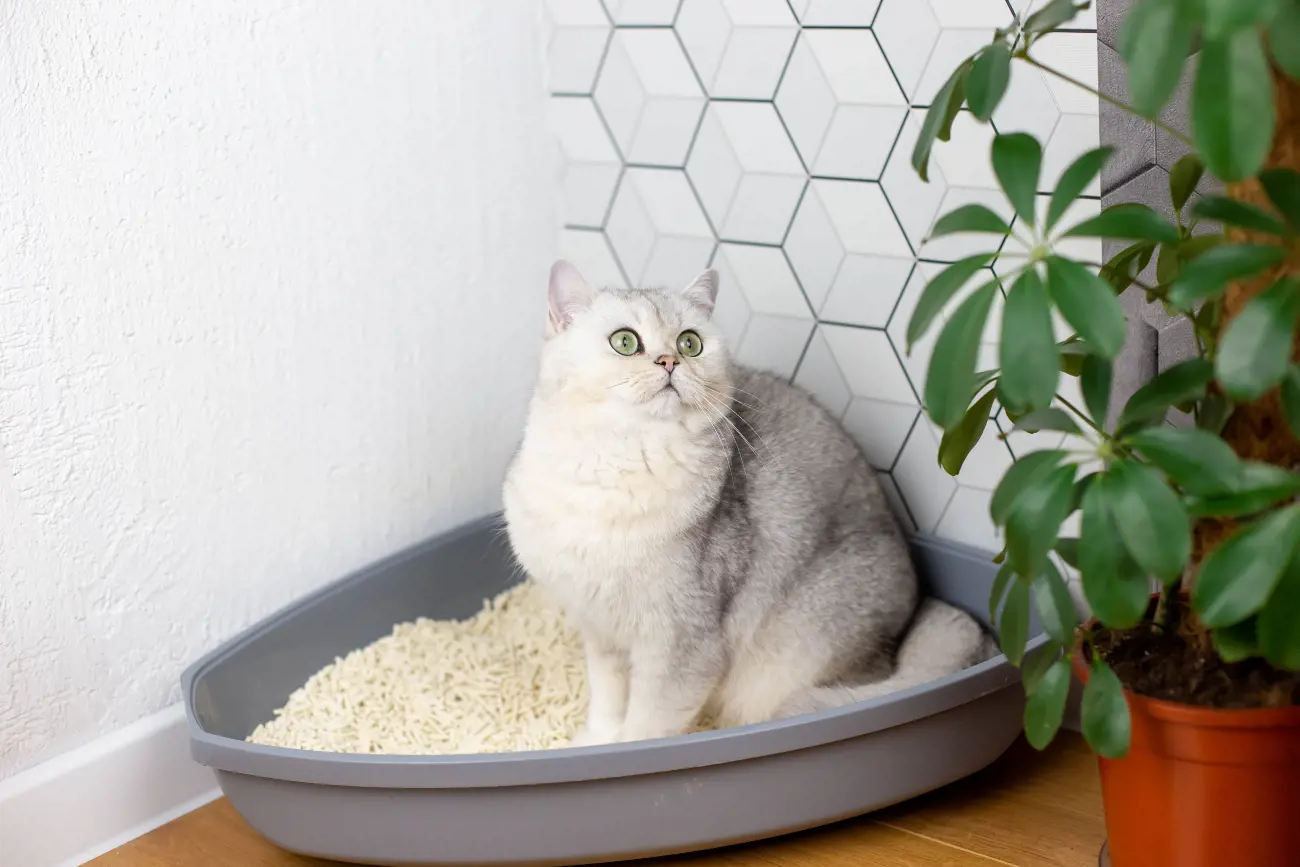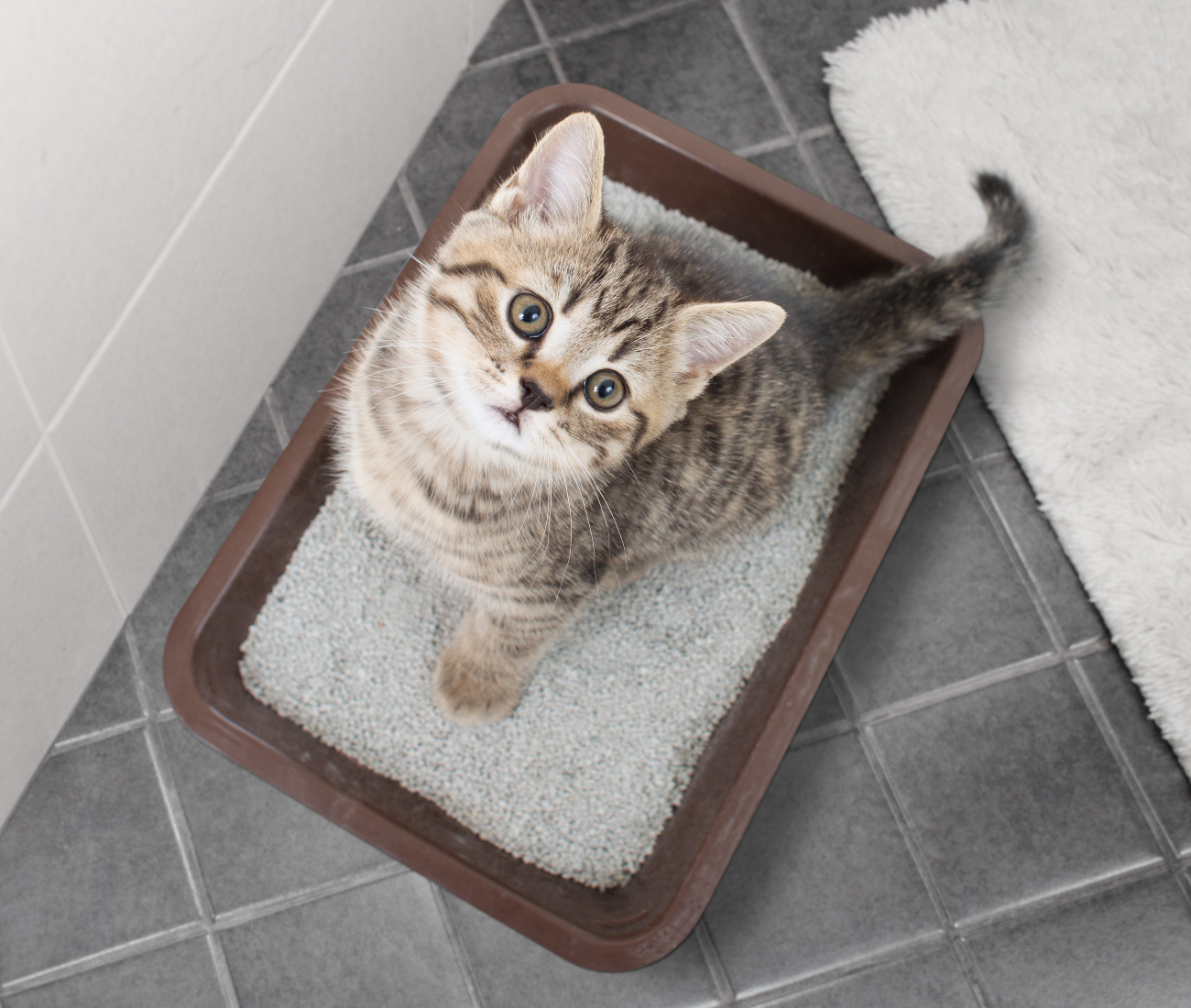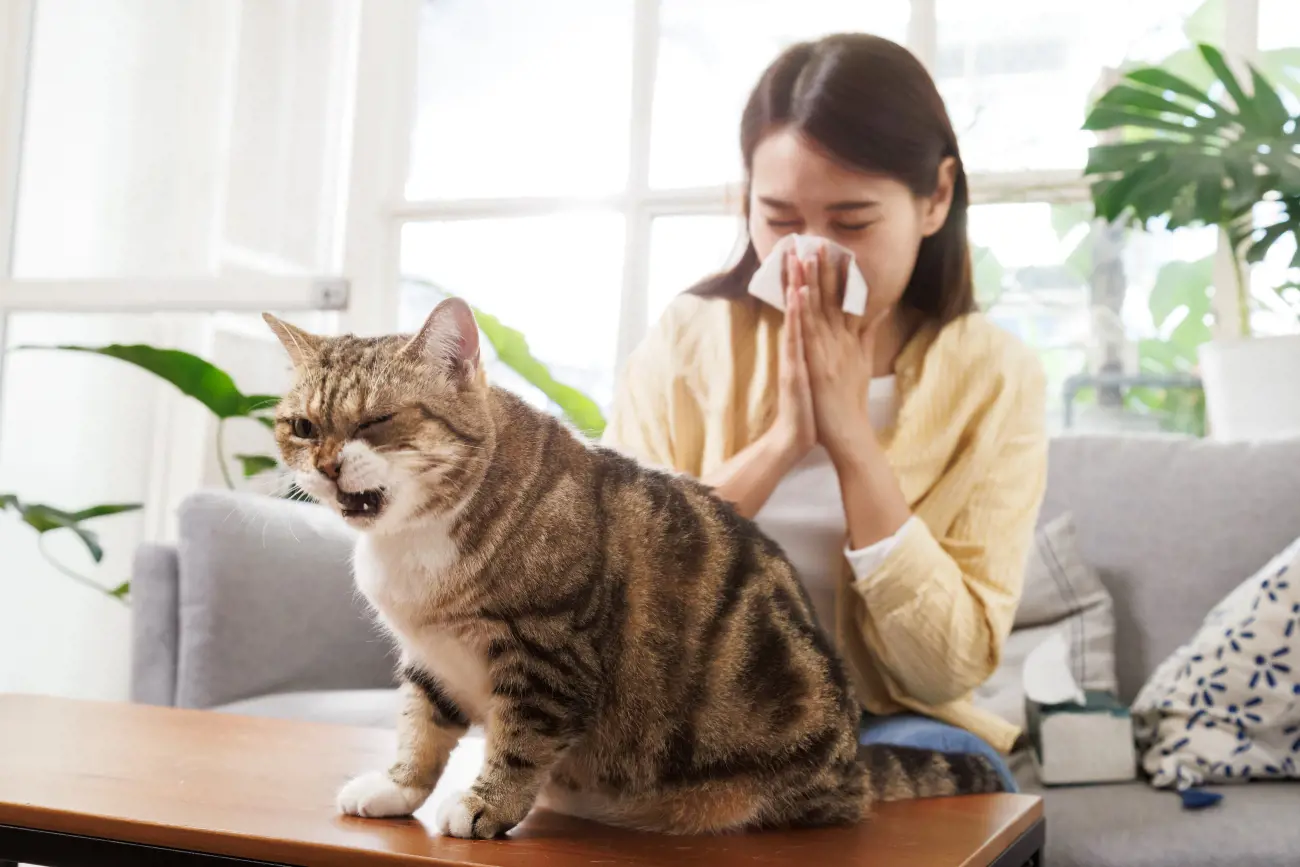How often should you change a cat's litter?
5th November, 2024

Do you know that the average cat owner changes their cat's litter box about 1-2 times a week? Understanding how often you should change a cat's litter is crucial for your feline friend's health and comfort. By following a proper schedule and being attentive to signs, you can ensure a clean and pleasant environment for your cat.
In this brief guide, we will explore factors affecting litter change frequency, the ideal schedule for changing litter, signs indicating it's time for a change, and the importance of regular litter maintenance. Stay tuned for valuable tips on extending litter life and adjusting change frequency based on your cat's needs.
Key takeaways
-
Type of litter influences change frequency
-
Change litter every two days for cleanliness
-
Strong, persistent odour indicates need for change
-
Add fresh litter daily to absorb moisture and odours
Understanding the importance of litter box cleaning
Cleaning the litter box is a crucial aspect of cat care that is often overlooked. A dirty litter box can lead to a range of health problems for your cat, including urinary tract infections, kidney stones, and respiratory issues.
Moreover, a dirty litter box can also cause behavioural problems, such as accidents outside of the litter box or avoidance of the litter box altogether. Regular litter box cleaning is essential to keep your cat healthy and happy.
Factors affecting litter change frequency
When determining how often to change your cat’s litter, consider factors such as the type of litter used, your cat’s habits, and how many cats are using the litter box.
The type of litter plays a crucial role in deciding when to change it. Clumping litter tends to last longer because you only need to remove the clumps and add fresh litter. Non-clumping cat litter may need changing more frequently as it absorbs urine but doesn’t clump for easy removal.
Your cat’s habits are equally important. Cats who are picky about cleanliness may require more frequent litter changes. Monitoring how often your cat uses the litter box and observing any signs of discomfort can guide you in determining the right schedule.
The number of cats sharing the litter box affects how quickly it gets soiled. How many cats you have means more waste, necessitating more frequent litter changes to maintain cleanliness and prevent odours.
Signs it's time to change litter
When the odour from the litter box becomes noticeable and the clumping ability decreases, it’s time to change your cat’s litter. Dirty litter boxes can lead to health issues and discomfort for your cat.
These signs indicate that the litter is no longer effectively controlling odour or absorbing moisture, impacting your cat’s comfort and hygiene. It’s crucial to change cat litter regularly to maintain a clean environment.
Odour becomes noticeable
If your cat’s litter box smells unpleasant within a day, it’s time to change the litter. Keeping the litter trays clean is crucial for your cat’s health and your home’s freshness.
Here are signs indicating it’s time to change the litter:
-
Strong odour: When the litter box starts emitting a strong, persistent smell, it’s a clear indication that the litter needs changing.
-
Clumping issues: If the litter is no longer clumping properly, it might be saturated and ineffective at controlling odours.
-
Visible mess: When you notice an excess of waste accumulated in the litter box, it’s time for a change.
-
Change in cat’s behaviour: If your cat avoids the litter box, it might signal that the odour is bothering them.
Clumping ability decreases
You should consider changing the litter when clumps become sparse or loose, indicating a decrease in clumping ability. A clean litter tray is essential for your cat’s hygiene.
When the litter starts to lose its clumping effectiveness, it can lead to a messier and less hygienic litter box. Sparse clumps make it harder to scoop out waste efficiently, leaving behind dirty litter that can cause odour issues and make it less appealing for your cat to use the box.
Loose clumps may break apart easily, failing to contain liquids effectively and allowing urine to seep to the bottom of the litter box.
Keeping an eye out for these signs and changing the litter promptly can help maintain a clean and odour-free environment for both you and your cat.
Importance of regular litter maintenance
Maintaining your cat’s litter box regularly is crucial for their health and wellbeing. Dirty litter boxes can lead to health issues and behavioural problems. Regular litter maintenance not only ensures your cat’s comfort but also plays a significant role in preventing potential health issues. Here’s why it’s important:
-
Prevents odours: Regularly cleaning your cat’s litter box helps to eliminate odours, creating a more pleasant environment for both you and your cat.
-
Reduces bacterial growth: By scooping out waste and clumps frequently, you can reduce the chances of harmful bacteria thriving in the litter box.
-
Promotes proper hygiene: Cats are clean animals by nature, and a clean litter box encourages them to use it consistently, promoting good hygiene habits.
-
Monitors cat’s health: Regularly maintaining the litter box allows you to monitor your cat’s waste for any changes, which can be an early indicator of health issues.
Ideal litter change schedule
For optimal cleanliness, change your cat’s litter at least once every two days. It’s important to replace all the litter periodically to ensure a hygienic environment. Maintaining a regular litter change schedule is crucial for your feline friend’s health and comfort. Here are some key points to consider when determining the ideal litter change schedule:
-
Odour control: Regularly changing the litter helps control odours in your home, creating a more pleasant environment for both you and your cat.
-
Hygiene: Cats are meticulous groomers, and a clean cat litter box promotes good hygiene habits in your pet.
-
Prevention of litter box aversion: Cats may develop litter box aversion if the box isn’t kept clean. Regular changes can prevent this issue.
-
Monitoring health: Frequent litter changes allow you to monitor your cat’s urine and faeces for any changes in colour, consistency, or frequency, which can be early indicators of health issues.
Tips for extending litter life
To extend your cat’s litter life, regularly adding fresh litter and removing clumps is essential. If you have more than one cat, you may need to adjust your maintenance routine accordingly.
By adding a small amount of fresh litter to the box every day, you can help absorb moisture and odours, making the litter last longer. This practice also prevents the litter from becoming saturated too quickly, reducing the frequency of complete litter changes.
Additionally, scooping out solid waste and clumps daily not only maintains a clean environment for your cat but also extends the life of the litter. This prevents the spread of odours and bacteria, reducing the need for frequent full litter replacements.
Consider using litter box liners or mats to catch excess litter and prevent it from being wasted or tracked around your home. These accessories can make clean-up easier and more efficient, ultimately prolonging the lifespan of your cat’s litter.
Lastly, storing your litter in a cool, dry place can prevent it from clumping prematurely and absorbing odours from the environment. By following these simple tips, you can make your cat’s litter last longer and provide a more pleasant experience for both you and your feline companion.
Scooping the litter box
Scooping the litter box is an essential part of maintaining a clean and hygienic litter box. It involves removing solid waste and clumps from the litter box, usually on a daily basis. Scooping the litter box helps to prevent the build-up of bacteria and odours, which can be unpleasant for both you and your cat.
When scooping the litter box, make sure to wear gloves and use a scoop that is designed for cat litter. Remove all solid waste and clumps, and dispose of them in a trash can.
Safe disposal of used cat litter
Used cat litter can be a breeding ground for bacteria and parasites, which can be harmful to humans and other animals. It is essential to dispose of used cat litter safely and hygienically. Here are some tips for safe disposal of used cat litter:
-
Wear gloves when handling used cat litter to prevent the risk of infection.
-
Place used cat litter in a trash can with a tight-fitting lid to prevent odours and pests.
-
Do not flush used cat litter down the toilet, as it can clog pipes and harm aquatic life.
-
Do not compost used cat litter, as it can contain pathogens and parasites that can harm plants and animals.
Common mistakes to avoid when changing cat litter
Changing cat litter can be a daunting task, especially if you are new to cat ownership. Here are some common mistakes to avoid when changing cat litter:
-
Not changing the litter frequently enough: Failing to change the litter regularly can lead to a build-up of bacteria and odours, which can be unpleasant for both you and your cat.
-
Not scooping the litter box regularly: Scooping the litter box is essential to prevent the build-up of solid waste and clumps, which can be harmful to your cat’s health.
-
Using the wrong type of litter: Using the wrong type of litter can lead to a range of problems, including accidents outside of the litter box or avoidance of the litter box altogether.
-
Not cleaning the litter box thoroughly: Failing to clean the litter box thoroughly can lead to a build-up of bacteria and odours, which can be unpleasant for both you and your cat.
Adjusting litter change frequency
Regularly assessing your cat’s litter box usage patterns can help you determine if adjusting the frequency of litter changes is necessary. Clean litter boxes are essential for your cat’s health. Here are some factors to consider when deciding whether to change the litter more or less frequently:
-
Amount of waste: Monitor how much waste your cat produces daily to gauge if the litter needs changing more often.
-
Type of litter: Some litters absorb odours and clumps better than others, affecting how frequently you need to change it.
-
Number of cats: If you have multiple cats sharing a litter box, you might need to change it more frequently.
-
Health conditions: Cats with certain health issues may urinate more frequently, requiring more frequent litter changes.
How to choose the right litter for your cat
Choosing the right litter for your cat can be a daunting task, especially with so many options available. Here are some tips for choosing the right litter for your cat:
-
Consider your cat’s preferences: Some cats prefer clumping litter, while others prefer non-clumping litter. Consider your cat’s preferences when choosing a litter.
-
Consider your lifestyle: If you have a busy schedule, you may want to consider a litter that is low maintenance and easy to clean.
-
Consider your cat’s health: If your cat has health problems, such as kidney disease or respiratory issues, you may want to consider a litter that is designed to reduce dust and odours.
-
Consider the environment: If you are concerned about the environment, you may want to consider a litter that is eco-friendly and biodegradable.
Monitoring cat's response to litter changes
Observing your cat's behaviour after altering the litter can provide valuable insights into their comfort and satisfaction levels. Cats are creatures of habit and may exhibit various responses when changes are made to their litter box setup. By paying attention to your cat's reactions, you can ensure they have a positive toileting experience.
Here are some common cat behaviours to watch for after changing their litter:
-
Refusing to use the litter box: Discomfort with the new litter texture or scent
-
Digging excessively: Dislike of the litter depth or type
-
Urinating outside the box: Disapproval of the new litter brand or cleanliness
-
Meowing or pacing around the box: Stress or confusion due to the change
-
Using the box without issues: Acceptance and satisfaction with the new litter
Monitoring your cat's response to litter changes is crucial in maintaining their litter box habits and overall well-being. If you notice any concerning behaviours, consider reverting to the previous litter or making gradual adjustments to help your feline friend feel content.
Conclusion

So, remember to keep your cat's litter box clean and fresh by changing it regularly. Just like how you wouldn't want to eat off dirty dishes, your cat doesn't want to use a dirty litter box.
By staying on top of litter maintenance, you can ensure your furry friend stays happy and healthy. Plus, a clean litter box is like a spa day for your cat - a little luxury they deserve!
To get a cat insurance quote for your furry friend you can get a quote through our website. If you would like to talk to one of our cat insurance team, you can get in touch with us on 0330 102 5748.
Frequently asked questions
Using scented litter can impact how often you need to change it. Some cats may dislike scented litter, leading to them avoiding the box. This could result in more frequent changes to maintain a clean environment.
Having more cats in your home means you'll likely need to change the litter more frequently. Each additional cat increases waste, so consider scooping daily and changing the litter fully every 1-2 days for a cleaner environment.
Not changing the litter frequently enough can pose health risks for both you and your cat. Bacteria build-up may lead to infections or respiratory issues. Make sure to scoop daily and change the litter regularly to maintain a healthy environment.
To keep your cat healthy and happy, the type of litter box and its cleanliness are vital. Regularly changing the litter, based on the box's size and your cat's preferences, helps maintain a hygienic environment and prevents health issues.
Your cat's diet can impact litter changes. Foods high in moisture may result in more frequent litter swaps. Remember, a balanced diet keeps the litter box fresh longer.
Helpful Pages
Recent Posts

Why do Great Danes bury their heads?
12/03/25
Find out more about Beagles
28/02/25Pet Insurance Quote
- 98% claims paid *
- Claims paid directly to vets
- 24/7 vet video consultations
- Interest free monthly payments


